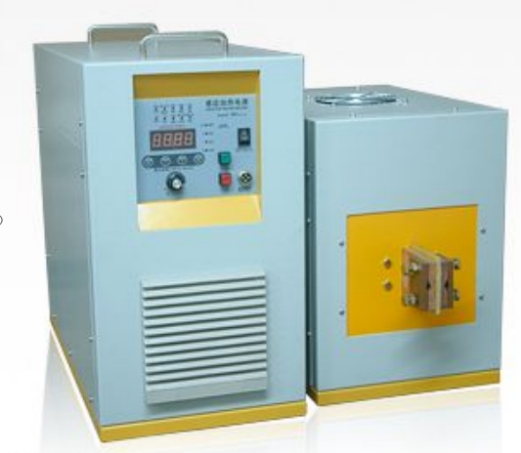- 17
- Oct
高周波消光と中周波消光の違い
違い 高周波焼入れ and intermediate frequency quenching
1.高周波焼入れとは
Most high-frequency quenching is used for surface quenching of industrial metal parts. It is a metal heat treatment method that generates a certain induction current on the surface of the workpiece, rapidly heats the surface of the part, and then quenches it quickly.
第二に、中間周波数消光とは何ですか
Intermediate frequency quenching is to put metal parts in an induction coil, the induction coil is energized to generate an alternating electromagnetic field, and an alternating current is induced in the metal part. Due to the skin effect, the current is mainly concentrated on the surface of the metal part, so the surface temperature The highest is the water spray cooling or other cooling immediately below the induction coil. Since the heating and cooling are mainly concentrated on the surface, the surface modification is obvious, while the internal modification is basically not, and it can have a very special heat treatment effect.
Three, the difference between high-frequency quenching and medium-frequency quenching
高周波焼入れと中周波焼入れはどちらも一種の表面熱処理技術です。 どちらも高周波(または中周波、電力周波数)の誘導電流を使用して鋼部品の表面を急速に加熱し、すぐに冷却します。
高周波硬化の動作原理は、誘導加熱の原理である中周波硬化の動作原理と同じです。つまり、ワークピースはインダクターに配置されます。インダクターは、通常、中周波数または高周波交流(1000〜300000Hz以上)。 交番磁界は、ワークピースに同じ周波数の誘導電流を生成します。 この誘導電流のワークへの分布は不均一です。 表面は強いが、内側は弱い。 コアに近い0です。 この表皮効果を利用すると、ワークの表面をすばやく加熱でき、表面温度は数秒で800〜1000℃に上昇しますが、コアの温度はほとんど上昇しません。
ただし、加熱プロセス中、ワークピース内の誘導電流の分布は均一ではなく、異なる電流周波数によって生成される加熱効果も異なります。
1.高周波焼入れ
現在の周波数は100〜500kHzです
Shallow hardened layer (1.5~2mm)
高い硬度
ワークは酸化しにくい
小さな変形
焼入れ品質が良い
高い生産性
Suitable for parts that work under friction conditions, such as generally small gears and shafts (the materials used are 45# steel, 40Cr)
2.中間周波数クエンチング
現在の周波数は500〜10000Hzです
深硬化層(3〜5mm)
クランクシャフト、大型ギア、研削盤スピンドルなど、ねじりや圧力負荷がかかる部品に適しています(使用される材料は、45鋼、40Cr、9Mn2V、延性です)。
要するに、高周波焼入れと中間周波数焼入れの最大の違いは、加熱の厚さの違いです。 高周波焼入れは短時間で表面を硬化させることができます。 結晶構造は非常に細かく、構造変形は小さい。 中間周波数の表面応力は、高周波の表面応力よりも小さくなります。 。

